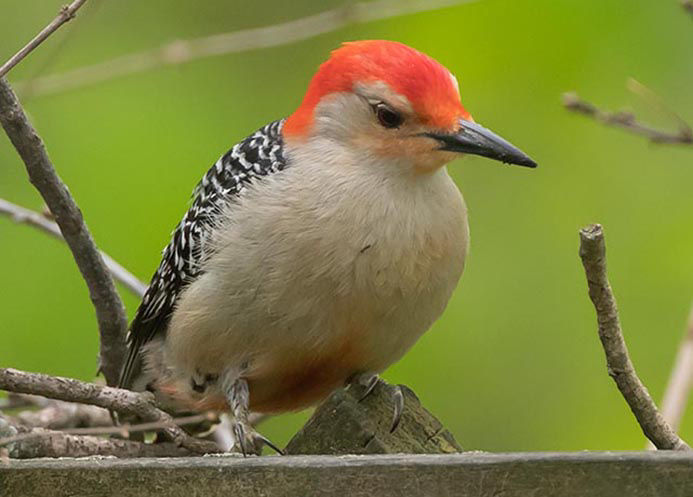Discover the Fascinating Globe of Woodpeckers: Whatever You Required to Know
The world of woodpeckers is a realm loaded with one-of-a-kind behaviors, detailed adjustments, and a varied variety of types. From their habitats and circulation patterns to their feeding practices and specialized physiological functions, woodpeckers have long captivated the passion of ornithologists and nature lovers alike. Understanding the details of these interesting birds provides a look into the intricate interplay in between their biology and the atmosphere. As we discover the world of woodpeckers better, we discover a wealth of details that sheds light on their relevance in communities and the obstacles they deal with in an ever-changing globe.
Woodpecker Habitats and Circulation
Woodpeckers inhabit a diverse range of settings worldwide, showcasing adaptability in their distribution patterns. These resilient birds are found in forests, forests, savannas, and deserts across different continents, showing their capacity to thrive in different climatic problems. In The United States and Canada, for instance, woodpeckers can be found in both coniferous and deciduous forests, utilizing their strong beaks to forage for insects and create nesting cavities in trees. Similarly, in Africa, certain woodpecker varieties have actually adjusted to dry settings, such as the acacia timberlands, where they play a crucial duty in regulating insect populaces.

Feeding Behaviors and Diet Plan
Among the different elements of their habits, woodpeckers show distinctive feeding habits and dietary preferences. These birds are primarily insectivores, with a diet that includes ants, beetles, caterpillars, and other bugs discovered in trees. Woodpeckers utilize their strong beaks to drill into the bark of trees, probing for insects and larvae concealed underneath the surface area. In enhancement to bugs, woodpeckers likewise take in nuts, seeds, fruits, and sap. Some types have specialized tongues with barbed pointers that aid them remove pests from gaps in wood.
Woodpeckers are known for their drumming behavior, which offers not just to interact with other woodpeckers yet additionally to situate food. The quick drumming noise is created by the bird pecking on resonant surface areas like dead trees or metal poles. This behavior can draw in insects hidden in the timber, enabling the woodpecker to find their existence and feed on them.
Distinct Adaptations for Tree Climbing
In their skilled search of pests hidden within tree bark, woodpeckers have advanced remarkable anatomical functions that furnish them with one-of-a-kind adjustments for reliable tree climbing. Woodpeckers have strong neck muscle mass and an one-of-a-kind skull structure that soak up the impact of continuous pecking, enabling them to climb up up and find out here down without causing harm to their minds. These adjustments display the incredible evolutionary style that allows woodpeckers to browse trees with precision and effectiveness.
Diverse Woodpecker Types Worldwide
With over 200 different types spread throughout different habitats worldwide, the household of Picidae includes an exceptional variety of woodpeckers. These birds can be discovered in forests, forests, savannas, and also city locations, showcasing their flexibility to various environments. From the iconic Northern Flicker in North America to the colorful and elusive Crimson-backed Flameback in Check Out Your URL Asia, each woodpecker species exhibits distinct qualities in terms of tuft, habits, and environment choice.
Woodpeckers vary considerably in size, with the diminutive Downy Woodpecker gauging around 6-7 inches in length, while the powerful Lineated Woodpecker can get to up to 17 inches - Woodpeckers in Florida. Their beaks likewise are available in various forms and sizes, reflecting their feeding habits. Some species concentrate on drawing out insects from tree bark, like the Acorn Woodpecker, while others, such as the Black-cheeked Woodpecker, feed on fruits and seeds

Preservation Initiatives and Challenges
Preservation efforts for woodpecker populaces are critical in reducing the effect of environment loss and various other risks dealing with these varied bird varieties. Woodpeckers face various challenges to their survival, mainly due to deforestation, urbanization, climate modification, and intrusive types. To resolve these concerns, preservation initiatives focus on safeguarding and bring back woodpecker habitats, carrying out lasting forestry methods, and increasing understanding concerning the significance of these birds in communities.
One considerable difficulty in woodpecker conservation is the fragmentation of their habitats, leading to isolated populaces that are much more susceptible to extinction - Woodpeckers in Florida. Conservationists work to develop wild animals passages and secured areas that link these fragmented habitats, allowing woodpeckers to Resources move in between various areas for feeding, breeding, and sanctuary

Verdict
In conclusion, woodpeckers are interesting birds with special adjustments for tree climbing and feeding habits. Additional research study and conservation activities are required to make certain the survival of woodpeckers in the wild.
Comments on “Encountering Woodpeckers in Florida Variety: Environments and Actions”